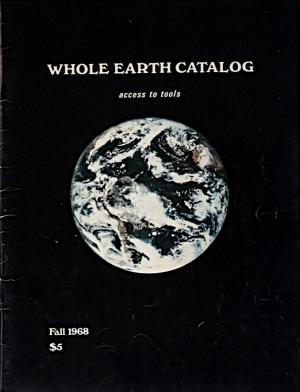David M. Berry: The Philosophy of Software: Code and Mediation in the Digital Age (2011)
Filed under book | Tags: · code, computation, computing, philosophy, software, software studies

The Philosophy of Software is a critical introduction to the subject of code and software, and develops an understanding of its social and philosophical implications in the digital age. The book has been written specifically for people interested in the subject from a non-technical background and provides a lively and interesting analysis of these new media forms. Software is a tangle, a knot, which ties together the physical and the ephemeral, the material and the ethereal, into a complete system that can be controlled and directed. However, software exceeds our ability to place limits on its entanglement, for it has in the past decade entered the everyday home through electronic augmentation that has replaced the mechanical world of the twentieth century. From washing machines to central heating systems, children’s toys to television and video; the old electro-magnetic and servo-mechanical world is being revolutionised by the silent logic of virtual devices. It is time, therefore, to examine our virtual situation.
Publisher Palgrave Macmillan Limited, 2011
ISBN 0230244181, 9780230244184
200 pages
PDF (updated on 2012-8-3)
Comment (0)Stewart Brand (ed.): Whole Earth Catalog (1968-1998) & Whole Earth Software Catalog & Review (1984-1986)
Filed under catalogue | Tags: · apple, computing, counterculture, ibm, software, technology


The Whole Earth Catalog was an American counterculture catalog published by Stewart Brand between 1968 and 1972, and occasionally thereafter, until 1998. Although the WECs listed all sorts of products for sale (clothing, books, tools, machines, seeds – things useful for a creative or self-sustainable lifestyle) the Whole Earth Catalogs themselves did not sell any of the products. Instead the vendors and their prices were listed right alongside with the items. This led to a need for the Catalogs to be frequently updated. (source)
The Whole Earth Software Catalog and The Whole Earth Software Review (1984-1985) were two publications produced by Stewart Brand’s Point Foundation as an extension of The Whole Earth Catalog.
The Catalog and Review were notable for being “devoid of any industry advertising” and for being “accessible and user friendly – written in an glib, conversational style that takes most of the bugs out of microprocessing.”
Fred Turner discusses the production and eventual demise of both the Catalog and Review in From Counterculture to Cyberculture: Stewart Brand, the Whole Earth Network, and the Rise of Digital Utopianism. Turner notes that in 1983, The Whole Earth Software Catalog was proposed by John Brockman as a magazine which “would do for computing what the original [Whole Earth Catalog] had done for the counterculture: identify and recommend the best tools as they emerged.”
Brand announced the first publication of the quarterly Whole Earth Software Review at the SoftCon trade show at the Louisiana Superdome in New Orleans in March 1984. While both were published as an extension of Whole Earth, the Catalog was a large glossy book sponsored by Doubleday and published in Sausalito California while the Review was a small periodical published in San Diego.
The Whole Earth Software Catalog and Review were both business failures. The Catalog was only published twice (1.0 in June and 2.0 in Fall ’85), with only three of The Whole Earth Software Review supplements published. (source)
Wikipedia (WEC)
Wikipedia (WESC & WESR)
Whole Earth Catalog, Fall 1968
Whole Earth Catalog, Spring 1969 (added on 2016-8-24)
The Last Whole Earth Catalog, 1971 (79 MB, added on 2020-4-14)
The Essential Whole Earth Catalog, 1986 (126 MB, added on 2020-4-15)
Whole Earth Software Catalog 1.0, 1984 (updated on 2012-7-18)
View online (incl. other issues)
Electronic Whole Earth Catalog (CD-ROM on Internet Archive, added on 2020-7-16)
See also:
Access to Tools: Publications from the Whole Earth Catalog, 1968-1974, online companion to 2011 exhibition at MoMA;
Index to the Internet Archive’s Whole Earth Collection, compiled by Robert Horvitz (added on 2018-8-18).
Marc Stumpel: The Politics of Social Media. Facebook: Control and Resistance (2010)
Filed under thesis | Tags: · facebook, floss, open source, protocol, resistance, software, tactical media, web, web 2.0
This thesis examines the governance of contemporary social media and the potential of resistance. In particular, it sheds light on several cases in which Facebook has met with resistance in its attempt to exercise control. This social networking site has raised concerns over privacy, the constraints of its software, and the exploitation of user-generated content.
By critically analyzing the confrontations over these issues, this thesis aims to provide a framework for thinking about an emerging political field. This thesis argues that discursive processes and (counter)protocological implementations should be regarded as essential political factors in governing the user activities and conditions on large social networking sites.
A discourse analysis unveils how Facebook enacts a recurrent pattern of discursive framing and agenda-setting to support the immediate changes it makes to the platform. It shows how contestation leads to the reconfiguration and retraction of certain software implementations. Furthermore, a software study analyzes how the users are affected by Facebook’s reconfiguration of protocological assemblages. Several tactical media projects are examined in order to demonstrate the mutability of platform’s software.
Keywords: Facebook, Network-making power, Counterpower, Framing, Protocol, Tactical Media, Exploitation, Open-source, Agonistic Pluralism, Neodemocracy
Master thesis
Media Studies (New Media), University of Amsterdam
Supervisor: Dr Thomas Poell
Second reader: Dr Geert Lovink
Date: August 16, 2010
82 pages

